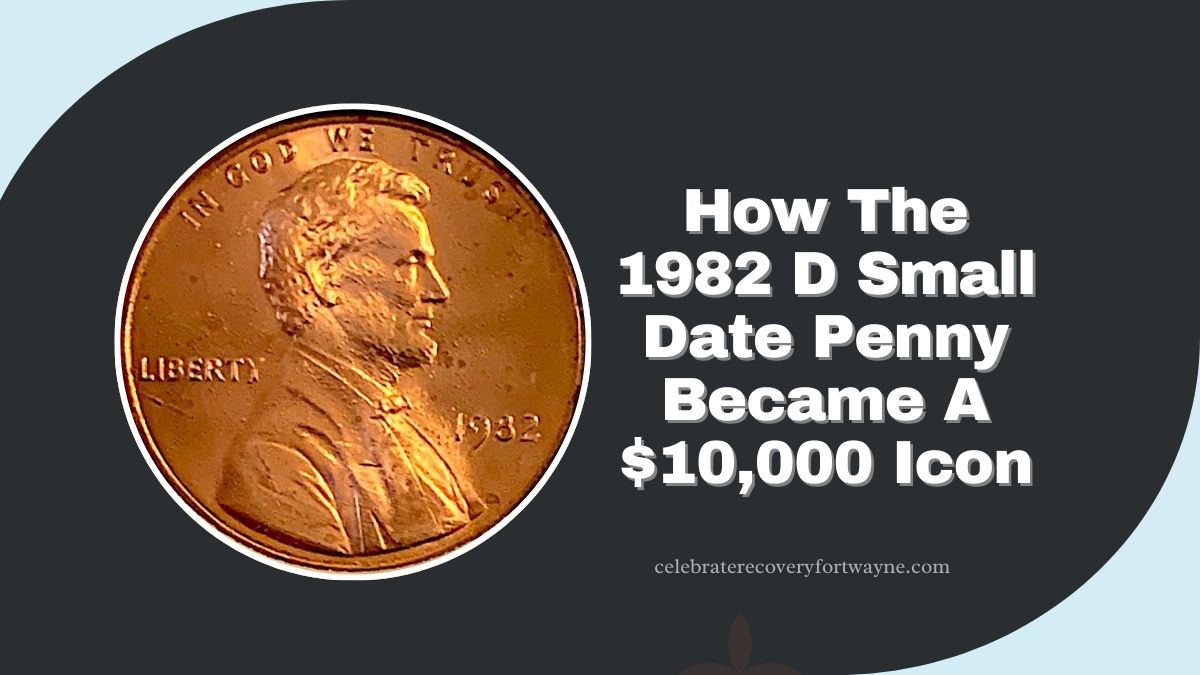The 1982-D Small Date Lincoln Penny has captured the attention of numismatists and collectors due to its unique characteristics and the substantial value it has achieved at auctions.
This article delves into the details of this rare penny, its distinguishing features, and the factors contributing to its high valuation.
The Transition of 1982: From Copper to Zinc
In 1982, the U.S. Mint transitioned from using a 95% copper alloy (weighing 3.11 grams) to a copper-plated zinc composition (weighing 2.5 grams) for pennies.
Additionally, both Large Date and Small Date varieties were produced during this year, leading to multiple combinations of date sizes, compositions, and mint marks.
The Rarity of the 1982-D Small Date Copper Penny
Among the various combinations, the 1982-D Small Date on a copper (95% copper) planchet is exceptionally rare.
The Denver Mint was believed to have struck only zinc planchets with the Small Date dies. However, a few copper planchets were mistakenly used, resulting in this rare variety.
Key Identifying Features:
- Date and Mint Mark: The coin bears the year “1982” with a Small Date configuration and a “D” mint mark below the date, indicating it was minted in Denver.
- Weight: A genuine copper penny weighs approximately 3.11 grams. Weighing the coin is crucial to determine its composition.
- Visual Differences: The Small Date variety has distinct numeral shapes, particularly the “2” in “1982,” which has a straight, non-curved tail.
Notable Discoveries and Auction Records
The first known discovery of the 1982-D Small Date copper penny was made by a collector in Minnesota in 2016.
This specimen was graded About Uncirculated (AU) 58 and sold at auction for $18,800 in August 2017. Subsequent discoveries have also fetched impressive sums, with another example selling for $10,800.
Factors Influencing the Penny’s Value
Several factors contribute to the high value of the 1982-D Small Date copper penny:
- Rarity: The unintentional use of copper planchets with Small Date dies at the Denver Mint makes this coin extremely scarce.
- Condition: Higher-grade coins, exhibiting minimal wear, command higher prices. Coins graded AU58 or higher are particularly valuable.
- Demand: Collectors highly seek after transitional error coins, especially those from significant changes in minting processes.
Identifying and Authenticating Your 1982-D Penny
If you suspect you have a 1982-D Small Date copper penny, follow these steps:
- Weigh the Coin: Use a precise digital scale to check if the coin weighs approximately 3.11 grams.
- Examine the Date and Mint Mark: Confirm the Small Date configuration and the presence of the “D” mint mark.
- Seek Professional Authentication: Submit the coin to a reputable grading service, such as the Numismatic Guaranty Corporation (NGC) or Professional Coin Grading Service (PCGS), for verification and grading.
The 1982-D Small Date copper penny stands as a testament to the intriguing anomalies that can occur in coin production.
Its rarity and the historical context of the 1982 composition transition contribute to its desirability among collectors.
For those passionate about numismatics, this penny exemplifies the excitement of discovering hidden treasures in everyday currency.
FAQs
How can I differentiate between a Small Date and Large Date 1982-D penny?
In the Small Date variety, the “2” in “1982” has a straight tail, and the tops of the digits align more evenly. In the Large Date, the “2” has a curved tail, and the “8” and “2” are slightly higher than the “1” and “9.”
Are all 1982-D pennies valuable?
No, only the 1982-D Small Date pennies struck on copper planchets (weighing 3.11 grams) are considered rare and valuable. The more common zinc versions (weighing 2.5 grams) are typically worth only face value.
Where can I sell a rare 1982-D Small Date copper penny?
Rare coins can be sold through reputable auction houses, coin dealers, or online numismatic marketplaces. It’s advisable to have the coin authenticated and graded by a professional service before selling.




